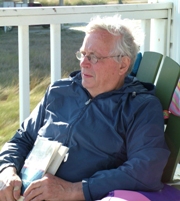Reversionary Pensions
When a superannuation pensioner dies, their pension usually ceases. Their dependants may receive the resultant death benefit in the form of a pension, often called a Death Benefit Pension. It is, however, a new pension, not a continuation of the existing pension.
Many public-offer pension funds provide the option of nominating a reversionary pension beneficiary (RPB) when the pension is started. An RPB cannot be nominated later. When a person with a reversionary pension dies, the pension continues to be paid, but goes to the named beneficiary instead.
If the RPB is a child, the reversionary pension must cease when the child reaches age 18 or, if still financially dependant, age 25. Children who are permanently disabled can continue to receive the pension for life.
Note that the conditions that applied to the original pensioner will continue to apply to the RPB for the remainder of the financial year in which the original pensioner died. For ensuing years, the minimum pension required to be paid and the Pay As You Go tax provisions will be based on the age of the RPB.
When a pension reverts to an RPB, it will automatically become an Account-Based Pension because the original pensioner satisfied a Condition of Release allowing access to all preserved and restricted benefits. Because it has not ceased, the tax-free percentage of each pension payment will not change and will apply upon the death of the reversionary pensioner.
As a result, it is possible that an RPB may receive two pension payments – one a reversionary pension and the other their own pension (either an account-based or a transition to retirement pension), each having different provisions.
In a Self-Managed Super Fund (SMSF), the trust deed must be checked to see if it will permit a reversionary pension to be established. There is a great deal more flexibility in an SMSF for stopping and starting a pension. If there is a compelling need for a reversionary pension beneficiary to be nominated, it would be possible to stop any existing pension and start a new one with an RPB nominated. However, this only applies if it is not a life-expectancy or term-allocated pension commenced before the prohibition on establishing such pensions in an SMSF.
If only the member and spouse are in the fund and there are no specific provisions as to what will happen on the death of a pensioner, a reversionary pension nomination will not achieve a significantly different outcome for the remaining member. This is because the original pensioner’s benefit could be paid to the surviving spouse in any event.
If there are one or more dependent children involved (and especially if they are disabled), a reversionary pension nomination in favour of the child or children may provide more flexibility than either non-binding nominations or binding nominations, or provisions of the pensioner’s legal will.
A Binding Death Benefit Nomination should only be necessary if there is no reversionary pension direction in place and the member wants to direct where their benefits go after death, or if the member wishes his or her benefit to be split among a number of dependent, non-dependent or estate beneficiaries.
Establishing a reversionary pension nomination should be done in conjunction with a comprehensive estate-planning review.

